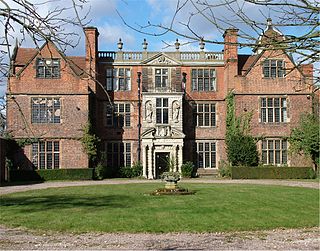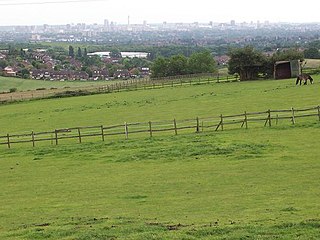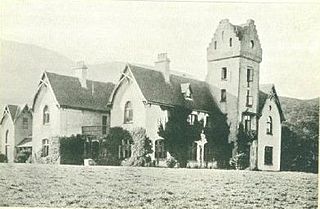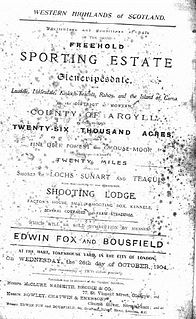
Castle Vale is a housing estate located between Erdington, Minworth and Castle Bromwich. Currently Castle Vale votes with Tyburn Ward which is part of Erdington constituency, 6 miles (9 km) northeast of Birmingham city centre in England. The area has an approximate population of 10,000 people and has a distinctly modern residential character stemming from its history as a postwar overspill estate.

Great Barr is now a large and loosely defined area to the north-west of Birmingham, England. The area was historically in Staffordshire, and the parts now in Birmingham were once known as Perry Barr, which is still the name of an adjacent Birmingham district. Other areas known as Great Barr are in the Metropolitan Boroughs of Walsall and Sandwell.

Ullenhall is a village and civil parish in the Stratford district of Warwickshire, England, situated about 2 miles (3.2 km) West of Henley in Arden and 11.2 miles (18.0 km) West of the county town of Warwick. The population of the civil parish as taken at the 2011 census was 717. The name means Ulla's nook, the Old English word hahl, meaning a nook or corner of land, suggesting the hollow in which the village is situated, being compounded with a personal name of Scandinavian origin.

The British Industries Fair was an exhibition centre in Birmingham, England.

Castle Bromwich Hall is a Jacobean Mansion in the Castle Bromwich area of Birmingham, England. It is a Grade I listed building.

The Browns Lane plant in Coventry, England was built as a Second World War shadow factory run by The Daimler Company Limited. In 1951 it was leased by Jaguar Cars and remained the company's home until 2005. It was the site of all Jaguar production until 1998, when production of the Jaguar S-Type commenced at Castle Bromwich. It was also the firm's corporate headquarters and the home of the Jaguar Daimler Heritage Trust.

Pheasey is a residential area of Birmingham Metropolitan Borough in the West Midlands of England, often considered to be part of Great Barr. The area was predominantly developed for housing, as the Pheasey Estate, in the 1930s, but work was not completed until after the Second World War. Barr Beacon, a hill, is a local landmark.

Càrna is an island in Loch Sunart, an arm of the sea, close to the Ardnamurchan peninsula, on the west coast of Scotland.
Holmwood House in Redditch, Worcestershire, is a country house built for Canon Horace Newton of Glencripesdale Estate and Barrells Hall in 1893 by the famed Victorian architect Temple Lushington Moore, who was a vague relative of the Newton family. Rev Canon Newton was brother of Goodwin Newton of Barrells Hall, where Canon Newton also grew up.
Canon Horace Newton was a priest within the Church of England, philanthropist, and country landowner.

Robert Knight, 1st Earl of Catherlough, KB, (1702–1772), was a British Member of Parliament for Great Grimsby, Castle Rising, Norfolk (1747–54) and Milborne Port, Somerset (1770–72). He became successively Baron Luxborough (1745), Viscount Barrells and Earl of Catherlough, all titles within the peerage of Ireland. His wife, Henrietta Lady Luxborough, later became well known as a lady of letters, poet and pioneering landscape gardener.
Elmhurst Hall was a country house in the village of Elmhurst, Staffordshire. The house was located approximately 1.5 miles north of the city of Lichfield.

Duxbury Hall was a 19th-century country house in Duxbury Park estate in Duxbury Woods, Lancashire that has been demolished.

Glencripesdale House, or Glencripesdale Castle as it was sometimes referred to, was the centre of the 26,000 acre Glencripesdale Estate, and was situated along the south side of Loch Sunart, a sea loch in the west highlands of Scotland.
John Jones Bateman (1817–1903) was an English architect, active in the town of Birmingham, where he designed a number of important civic buildings, and nonconformist churches, often in partnership with George Drury.












